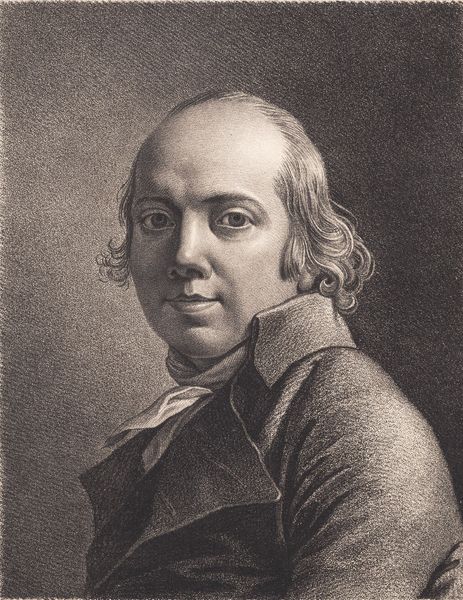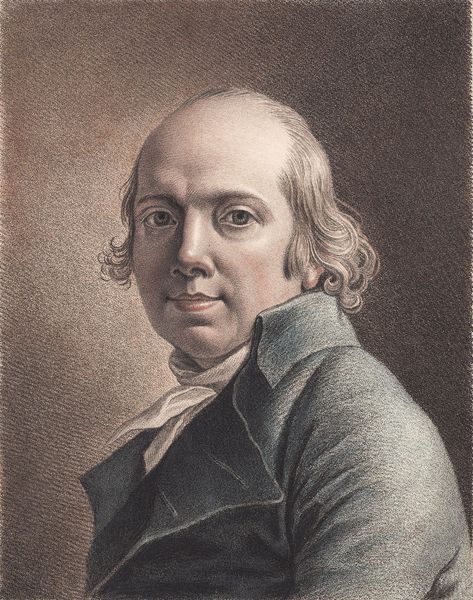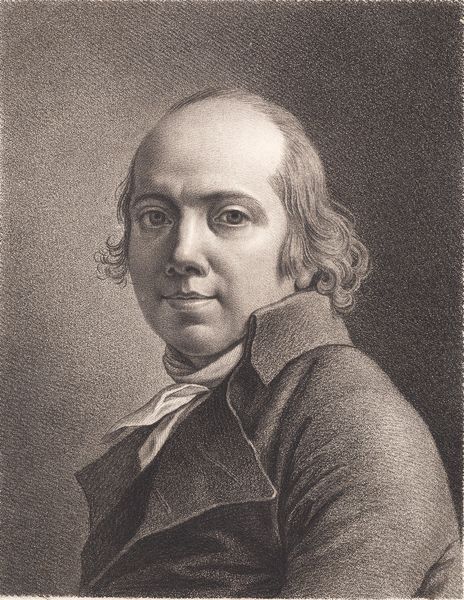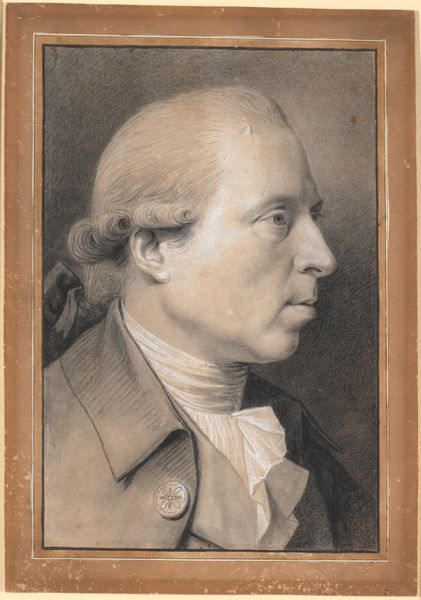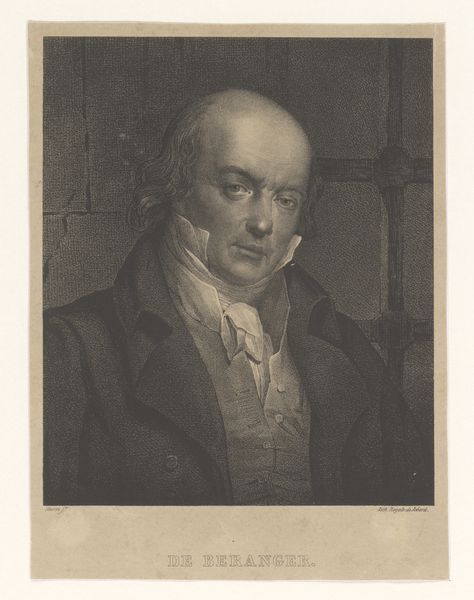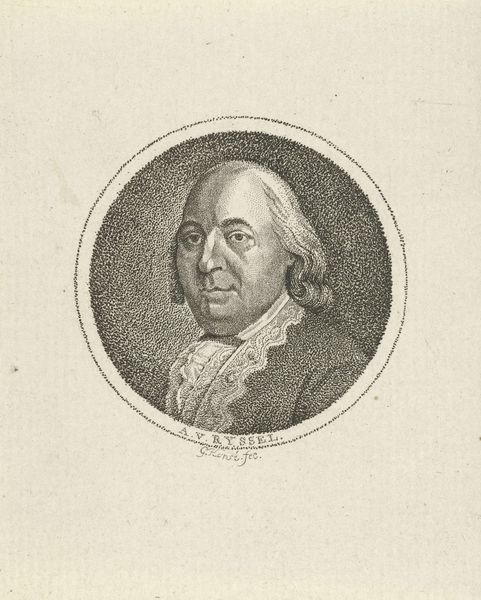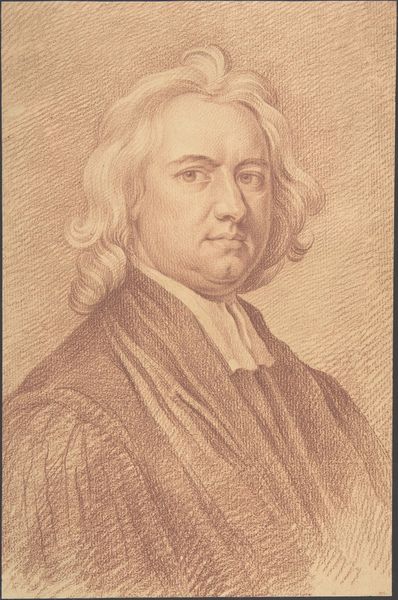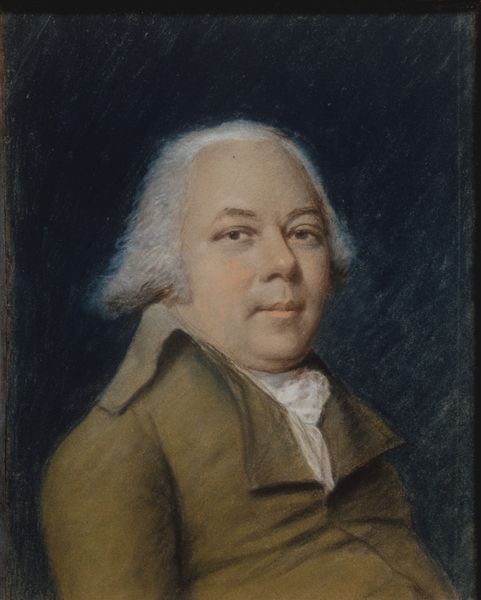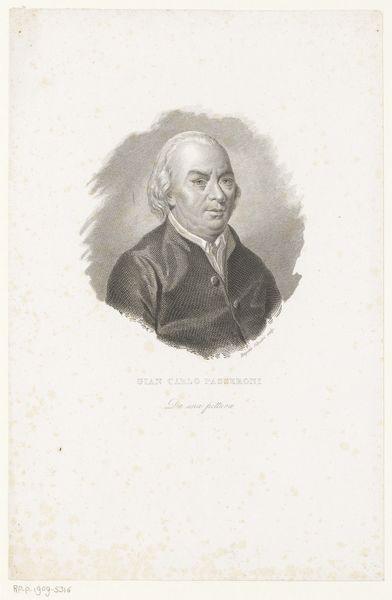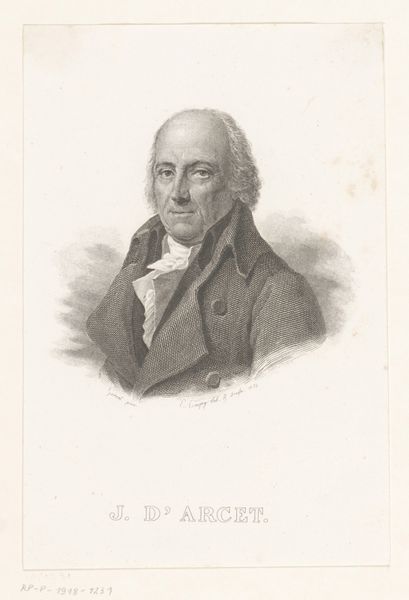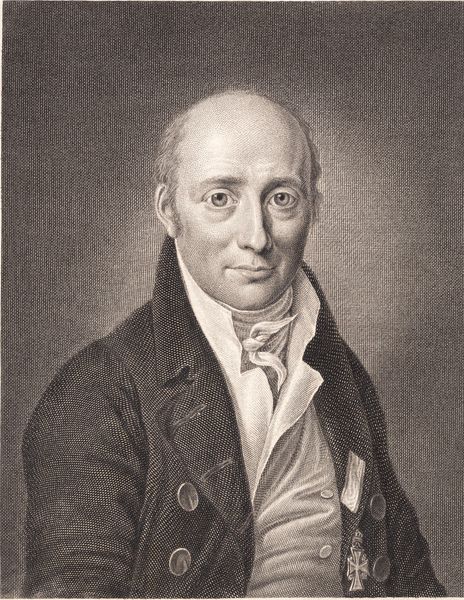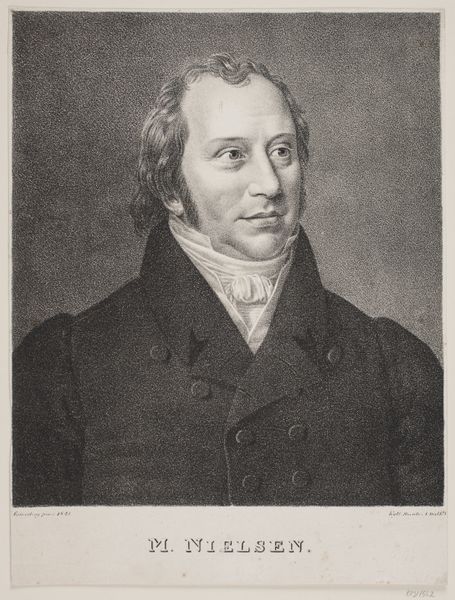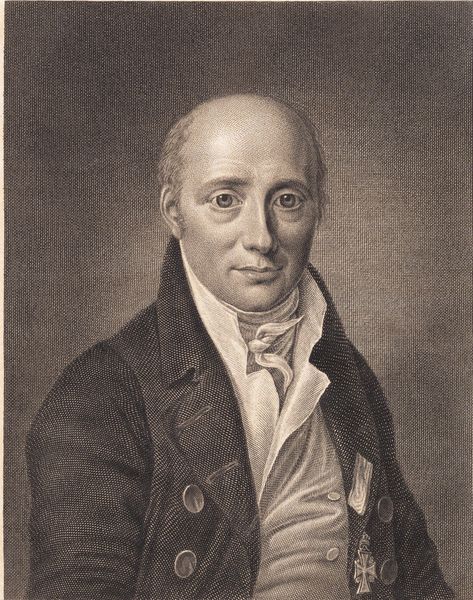
drawing, print, graphite
#
portrait
#
drawing
#
neoclacissism
#
self-portrait
# print
#
graphite
#
portrait drawing
#
portrait art
Dimensions: 257 mm (height) x 197 mm (width) (bladmaal)
Curator: Let’s turn our attention to "Jens Juels tegnede selvportræt," a self-portrait rendered in graphite and print by J.F. Clemens around 1801. What’s your initial reaction? Editor: There's an intensity in the gaze; he certainly commands attention, though the somber shading hints at introspection. It almost feels like he's challenging the viewer. Curator: Indeed. Notice how the cross-hatching defines the contours, particularly around the face, providing volume without being overtly dramatic. The subtle interplay of light and shadow is key to the emotional register. It is neoclassical in its adherence to form. Editor: Considering this was produced during the late Neoclassical period, I'm intrigued. Self-portraits were increasingly vehicles for artists to assert their identities. Juels was a sought-after portraitist – what message was he aiming to broadcast? What statements about artist identity were gaining importance during that time? Curator: Perhaps Clemens wanted to highlight the artist’s intellectual capacity. Observe the high forehead. And the precise lines indicate his mastery. Editor: Yes, the formality echoes the French academy style which was spreading to Danish art circles and helped propel Jens Jule’s work within the Royal Danish court. However, the work appears to present a controlled narrative about status through a controlled medium. Curator: I agree. It's a calculated self-presentation, evidenced by his composed expression, conveying competence. Editor: To reiterate, it prompts reflection on how artistic representation becomes inextricably tied to self-perception, ambition, and perhaps even strategies of social mobility. Curator: Precisely. His portrait operates both within established Neoclassical paradigms and as a means of negotiating a space for his image within a developing art sphere. Editor: An exercise, ultimately, in historical context meeting form. It reveals not just a likeness, but an intersection of intent, craftsmanship and history, I daresay. Curator: Well said. The composition combined with its artful restraint yields something profound.
Comments
No comments
Be the first to comment and join the conversation on the ultimate creative platform.
